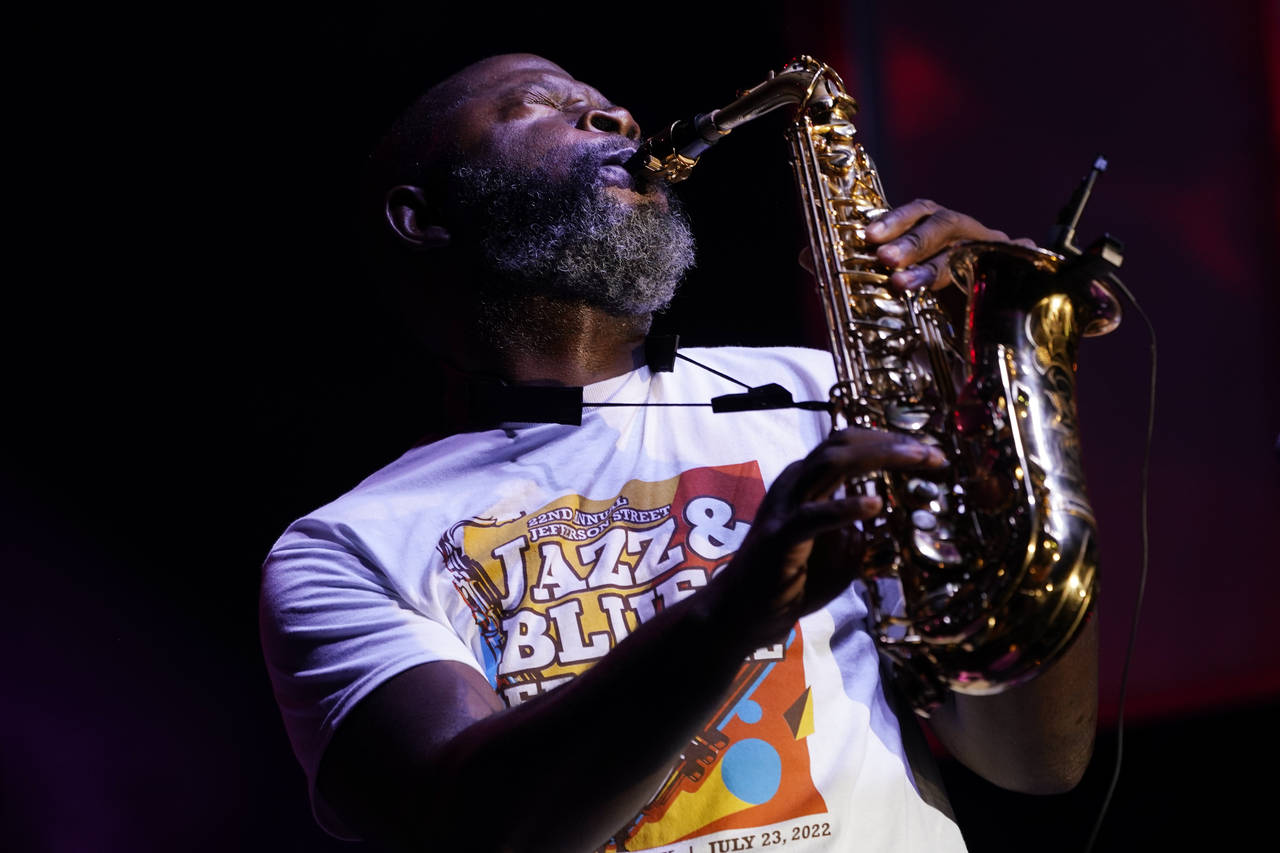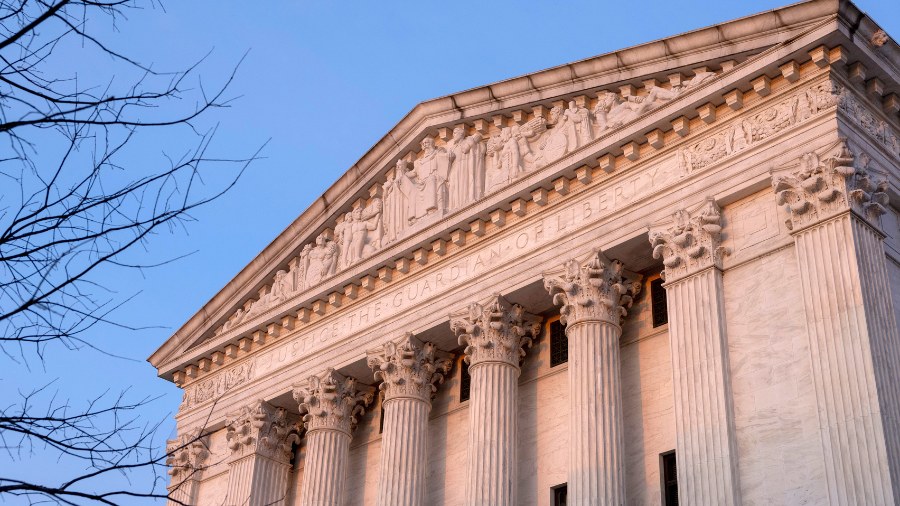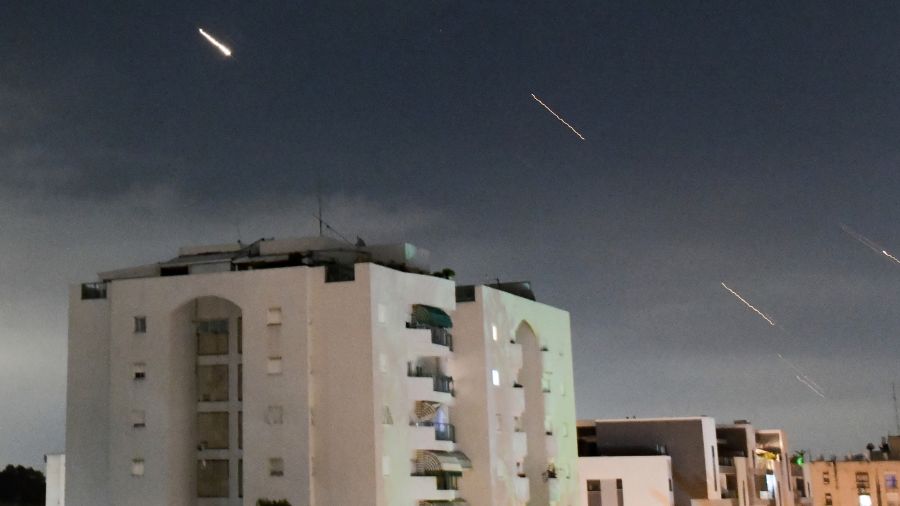Federal tourism aid funds gas stations, trash cans, jazz
Jul 29, 2022, 7:06 PM | Updated: Jul 30, 2022, 7:12 am

Mike Phillips performs at the Jefferson Street Jazz & Blues Festival July 23, 2022, in Nashville, Tenn. Hundreds of tourism-related projects nationwide, including the festival, collectively are getting about $2.4 billion from the American Rescue Plan, according to an Associated Press analysis of funds flowing from last year's wide-ranging coronavirus relief law. (AP Photo/Mark Humphrey)
(AP Photo/Mark Humphrey)
Located along a remote stretch of Highway 395, the Fort Independence Travel Plaza touts a dozen gas pumps, clean restrooms and made-to-order meals for travelers visiting California’s Eastern Sierra.
The facility, which provides revenue for a Paiute Indian tribe, is about to quadruple in size thanks to an $8 million federal grant that will help build a new gas station with room for cultural displays and locally made products.
It’s one of hundreds of tourism-related projects nationwide that are collectively getting about $2.4 billion from the American Rescue Plan, according to an Associated Press analysis of funds flowing from last year’s wide-ranging coronavirus relief law.
The money is paying for graffiti-resistant trash cans in Portland, Oregon, culturally diverse music festivals in Nashville, Tennessee, sports facilities in various cities and new marketing campaigns to attract tourists to particular states — sometimes in direct competition with one another.
“Our goal is to get people traveling again. Period,” said Dave Lorenz, chairman of the National Council of State Tourism Directors and the Michigan travel director.
Despite high fuel prices, Americans do seem to be hitting the road. After a plunge at the onset of the COVID-19 outbreak, U.S. travel spending this year is projected to top $1 trillion — up 45% from its 2020 low point, according to the U.S. Travel Association.
That corresponds with a similar increase in state tourism office budgets, which have rebounded to pre-pandemic levels thanks to the federal aid.
A coronavirus relief law signed by former President Donald Trump opened the potential for federal money to be used for local tourism projects.
The subsequent pandemic relief law signed by President Joe Biden expanded that. The American Rescue Plan contained $750 million for grants for tourism, travel and outdoor recreation through the federal Economic Development Authority. It also included the tourism, travel and hospitality sector among dozens of eligible uses — alongside health care, housing and unemployment programs — for a $350 billion pool of flexible aid sent to state, local, territorial and tribal governments.
Those governments had budgeted more than $1.6 billion from those flexible funds for about 550 tourism, travel and hospitality projects as of the end of March, according to an Associated Press analysis of recently released data from the U.S. Treasury.
Those tourism projects include $425,000 in Portland to replace 200 trash cans with ones that have larger openings and harder-to-deface surfaces made of such things as metal slats or wire mesh. The city cited ´´a substantial increase in the amount of trash, graffiti, and vandalism” during the pandemic, asserting that new garbage cans will “create a safer, more welcoming environment for visitors to our parks,” according to a description in the Treasury Department data.
Nashville, known for its country music scene, allotted $750,000 to reach “culturally diverse visitors.” That’s helping fund renovations at a once-prominent Black music venue, subsidize choir concerts at Fisk University and pay for an annual jazz and blues festival occurring in July, among other things.
The goal is to “build up the other genres without pushing country music down,” said Butch Spyridon, CEO of the Nashville Convention & Visitors Corp.
Of the tourism grants awarded through the Economic Development Authority, $510 million was divided among states and territories according to a formula that took into account job losses in their leisure and hospitality sectors. An additional $240 million was set aside for competitive grants, which are still being doled out.
One of those grants went to the Fort Independence Indian Reservation, a 220-member tribe that plans to add more than 60 jobs at its enlarged travel center.
“Part of tourism is getting from A to B, and one of the stops along the way is our reservation,” explained tribal vice chair Alisa Lee. “When we have been able to educate people about our community, our tribe and our culture, that is a form of tourism.”
Other competitive grants included $2.2 million to help replace old snowmaking equipment at Frost Fire Park ski resort in North Dakota, $1.6 million to help build a new Mardi Gras museum in Louisiana and $1.2 million to build locker rooms, concession facilities and a pavilion for a cross-country course at Middle Georgia State University.
University President Christopher Blake said in a statement that the project has the potential “to transform it into a recreational dynamo” that generates nearly $1 million a year in economic activity.
Several states also projected big returns on their federal tourism dollars, according to grant plans obtained by the AP through an open-records request.
Alabama plans to spend nearly $2.7 million to build three boat piers at reservoirs along the Coosa River. The state said regional fishing tournaments can lure $200,000 into an economy and national tournaments up to $1 million.
Oregon used a $9.1 million grant to help produce promotional videos and pictures of scenery that could be embedded into TV broadcasts of the World Athletics Championships that occurred this month in Eugene. The international broadcasts could yield between $224 million and $374 million in visitor spending and “spur economic development and opportunity for decades to come,” the Oregon Tourism Commission said in a grant plan submitted to federal officials.
Tourism projects generally seem like an appropriate use of the federal pandemic relief funds because the industry initially was one of the hardest hit, said Sean Moulton, a senior policy analyst at the nonprofit Project on Government Oversight.
But “as you give more flexibility,” Moulton said, “you run the risk of the money being used in ways that in retrospect you say that wasn’t the most effective.”
The city of Fort Worth, Texas, has directed $52 million of its flexible American Rescue Plan money for an expansion of its convention center. Of that, $40 million was categorized as tourism aid in a 2021 year-end report submitted to the Treasury Department.
The Treasury revised its rules in January to discourage big spending on convention centers and stadiums, stating that large capital expenditures to aid the travel and tourism industries are “not reasonably proportional to addressing the negative economic impacts of the pandemic.”
Fort Worth is moving ahead with the project anyway. The city reclassified the aid as a replacement for revenue lost during the pandemic — a category with the broadest flexibility under Treasury rules.
California got the largest tourism grant allocation, about $46 million. The state directed all of that — plus an additional $95 million of flexible federal pandemic aid — to its nonprofit tourism entity, which conducts national and international marketing.
Other states also have used the federal aid to try to draw visitors to their parks, shopping areas, restaurants and resorts.
While Michigan targets tourists in the neighboring Great Lakes region, Ohio is countering by expanding advertising into 11 new markets, including additional Michigan cities.
Missouri, meanwhile, is casting a broader net into the upper Midwest and the South. Thanks to a two-thirds increase in its tourism budget, Missouri is planning to expand advertising beyond its bordering states to reach potential travelers from Alabama, Louisiana, Minnesota, Mississippi, Ohio, South Dakota, Texas and Wisconsin.
“In order to stay competitive with the states that we consider competition, it was going to be important for us to up our game,” Missouri Tourism Director Stephen Foutes said.
Copyright © The Associated Press. All rights reserved. This material may not be published, broadcast, rewritten or redistributed.

















